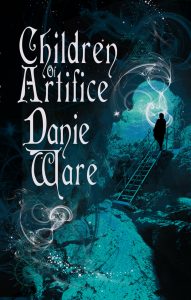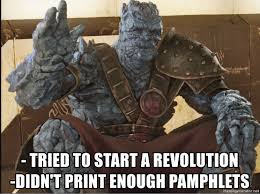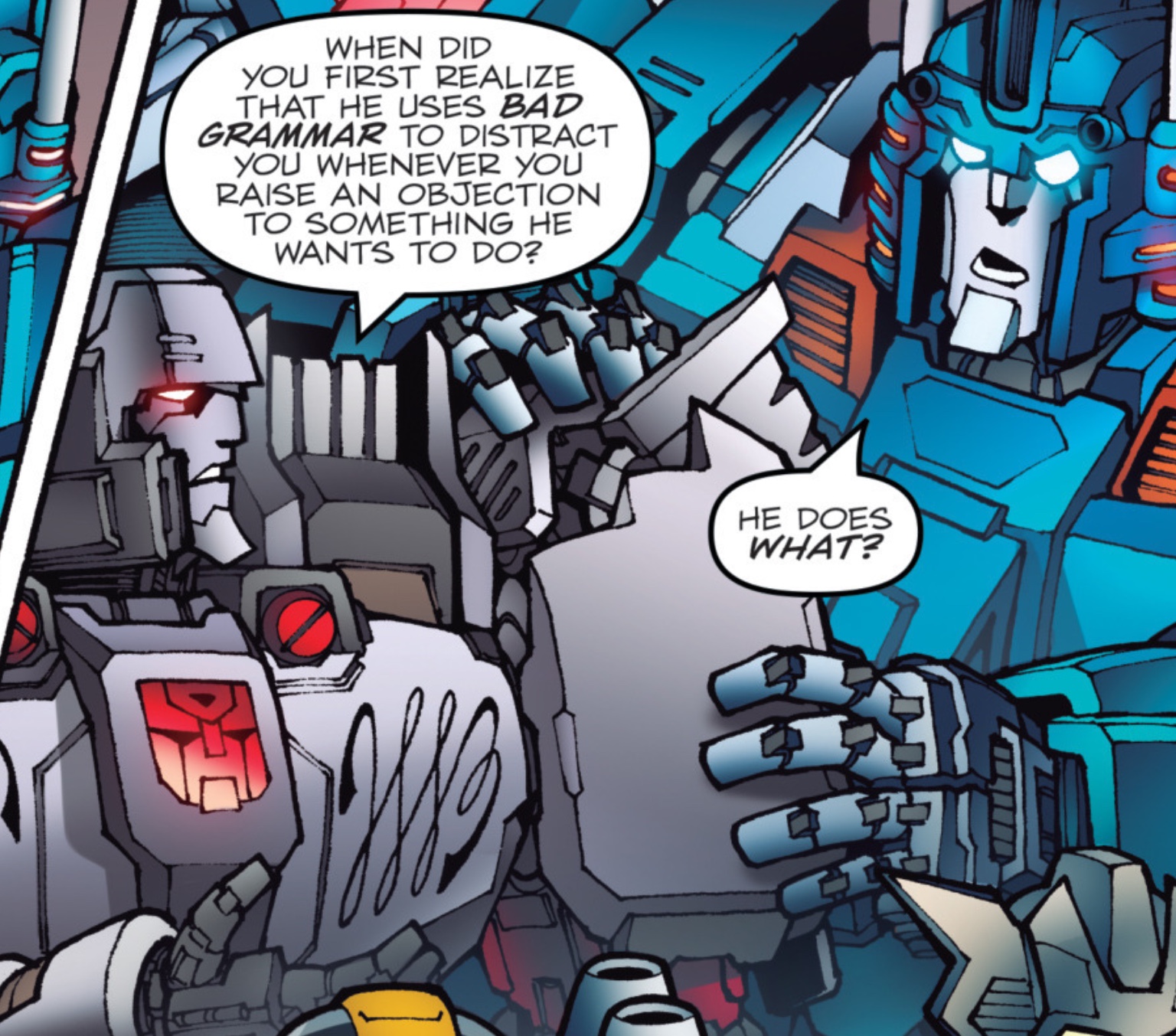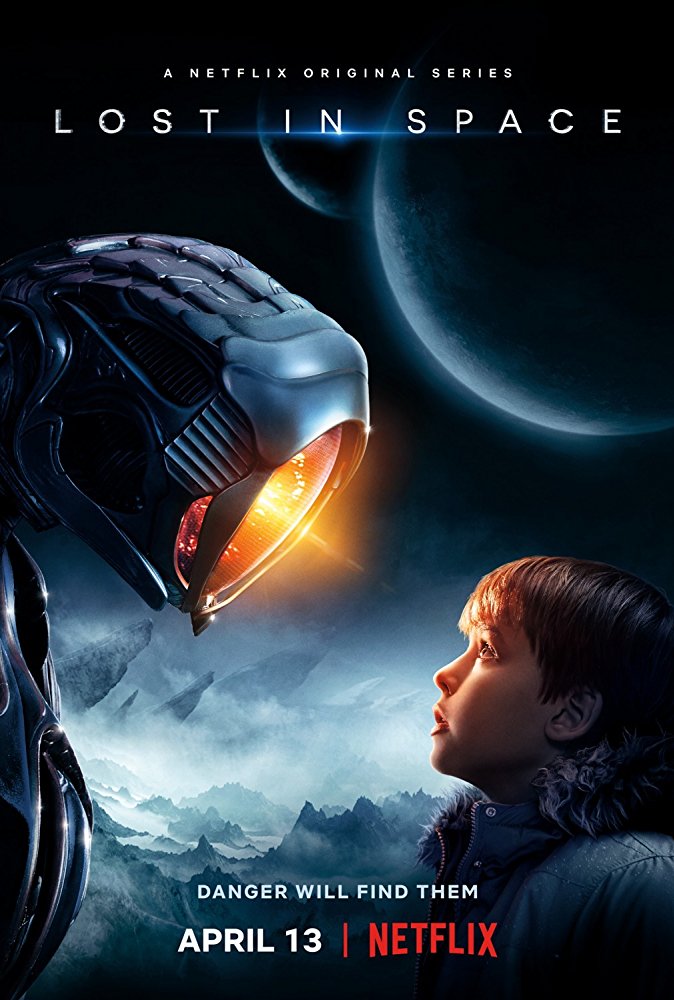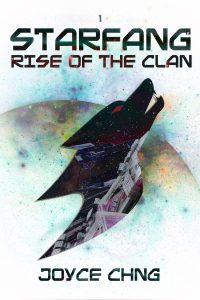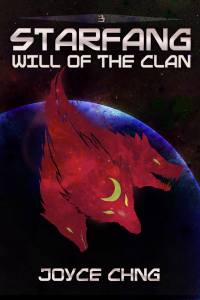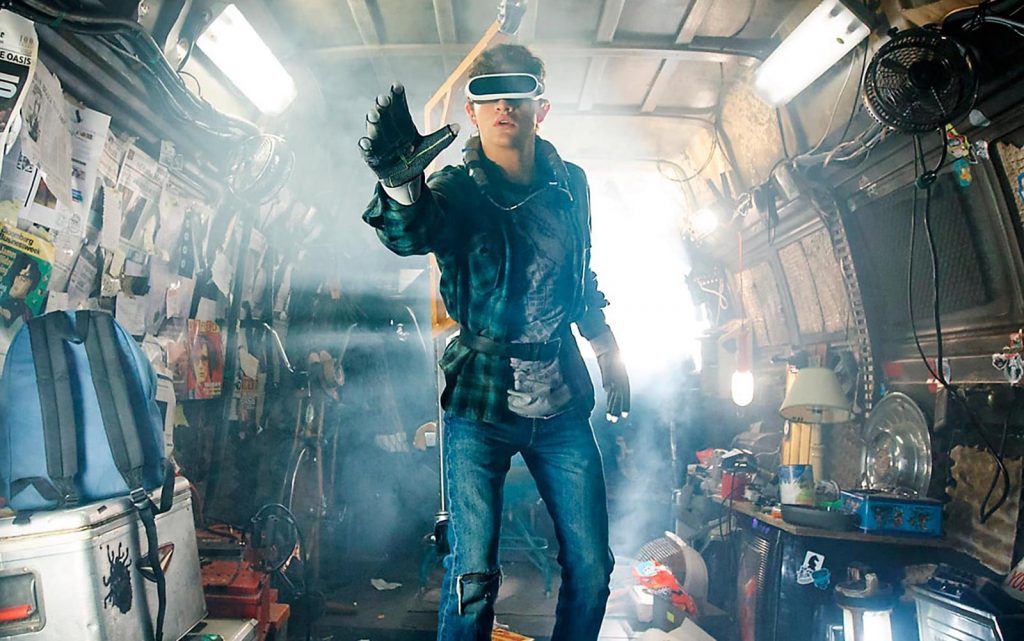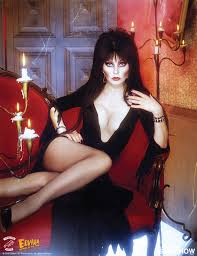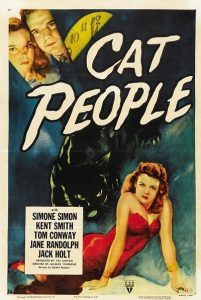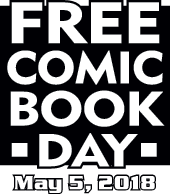 Free Comic Book Day, this weekend just gone, is an annual event designed to bring people into their local comics stores. Companies produce free books designed to showcase their best material, and stores buy it (Hold that thought) and give it away to customers. There are snacks, balloons, signings, parties.
Free Comic Book Day, this weekend just gone, is an annual event designed to bring people into their local comics stores. Companies produce free books designed to showcase their best material, and stores buy it (Hold that thought) and give it away to customers. There are snacks, balloons, signings, parties.
I love it, firstly because it’s a great outreach tool for an industry I worked in a lot and desperately needs new blood. Secondly because each successive Free Comic Book Day drives a stake a little further into the heart of the Comic Book Guy stereotype. And, as a 6’2, 300 pound former comic store manager, trust me when I say when that worthless garbage take is finally irrevocably dead I will be the first to dance on his grave.
(Quick aside: I once wrote an extended essay on this exact subject, for a comics site. I got this BRILLIANT 3000 word rebuttal emailed to me by someone who proved, using science, that Comic Book Guy is the hero of The Simpsons. I mean, they were completely wrong, but I respect the hustle).
Anyhoo, this is the first FCBD in a while where I’ve been near a store. Crunch Comics, in Reading, is about ten minutes away from my front door and has the exact feel I always look for in comic stores. Despite being smallits clean, brightly lit, cool, tidy and has a real sense of focused energy and enthusiasm to it. It’s the exact sort of store that Free Comic Book Day should be bringing new people to and I made sure to both pick up a couple of books and order a couple of things too.
Because, remember, Free Comic Book Day is only free for you. The stores have to pay so the unspoken social contact has to be; you pick up something free, you order something or buy something.
They didn’t have much stock left, which is always a good sign, but I grabbed a couple of books and read them last night. And it’s only now, having done so, that I realize they accidentally book end everything I love about geek culture, and what’s happening to it, surprisingly well.

WARNING: GIANT ROBOTS AHEAD
Transformers: Unicorn is written by John Barber, has art by Alex Milne, colours by Sebastian Cheng and letters by Tom B Long and is the start of an official endgame for this run of Transformers comics. IDW have held the license for over a decade and in that time have done extraordinary things with it. Till All Are One is essentially The West Wing (Of Cybertron) following the struggles to maintain peace on a world full of functionally-immortal transforming heavily armored robots. Optimus Prime has dived deep into the mindset of the most important leader in Autobot history and discovered just how fallible he can be and More Than Meets The Eye and Lost Light have essentially distilled joy down into comic form.
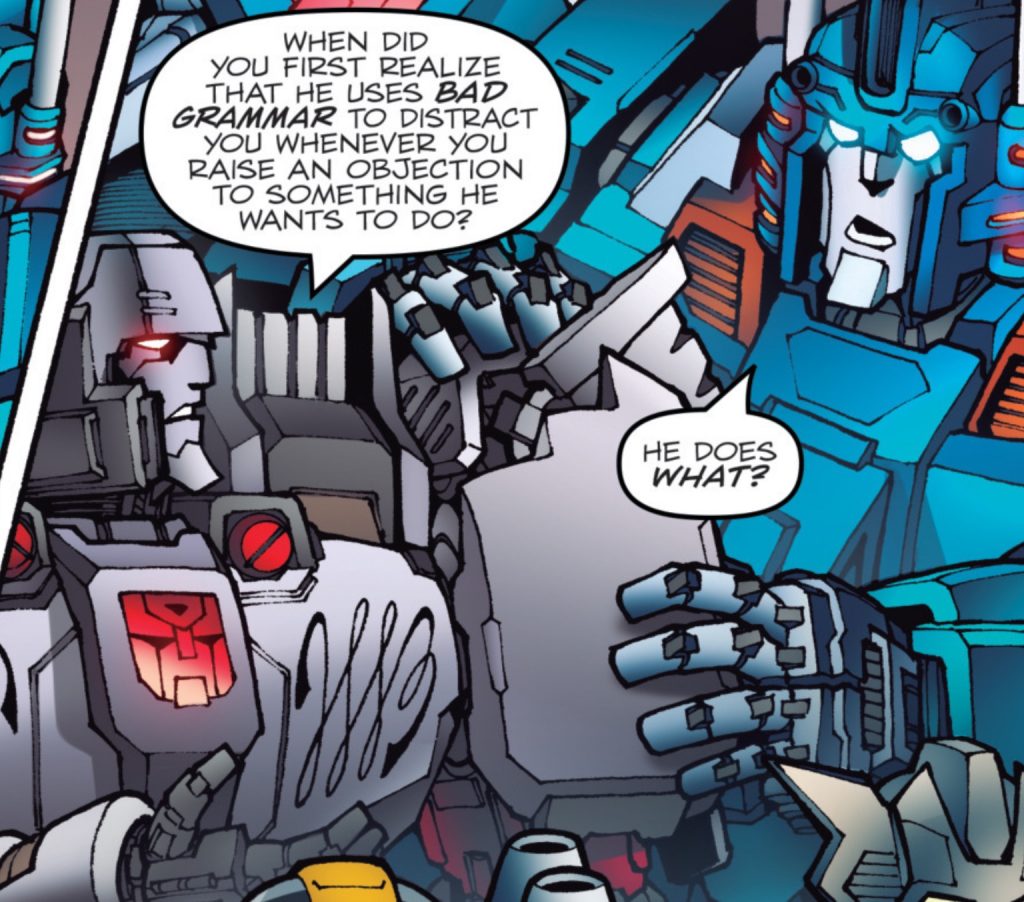
Seriously, these books are wondrous. More Than Meets The Eye is the story of a blazing argument that leads Hot Rod and a crew of volunteers to leave Cybertron in search of what is almost certainly a myth. They screw up, a lot. They get lost even more. It’s somewhere between Hitch-Hiker’s Guide, Waiting for Godot and Red Dwarf, just with heavily armed transforming robots as the lead. Over the years, the book, and Lost Light its sequel, have explored PTSD, romance, the fluidity of sexual identity and just how in love with himself Hot Rod actually is. They’ve given a redemption narrative, one that landed no less, to the last character that you’d expect. They’ve been hilarious, tragic, heart-warming and inspirational. Everything a licensed comic is traditionally expected not to be.
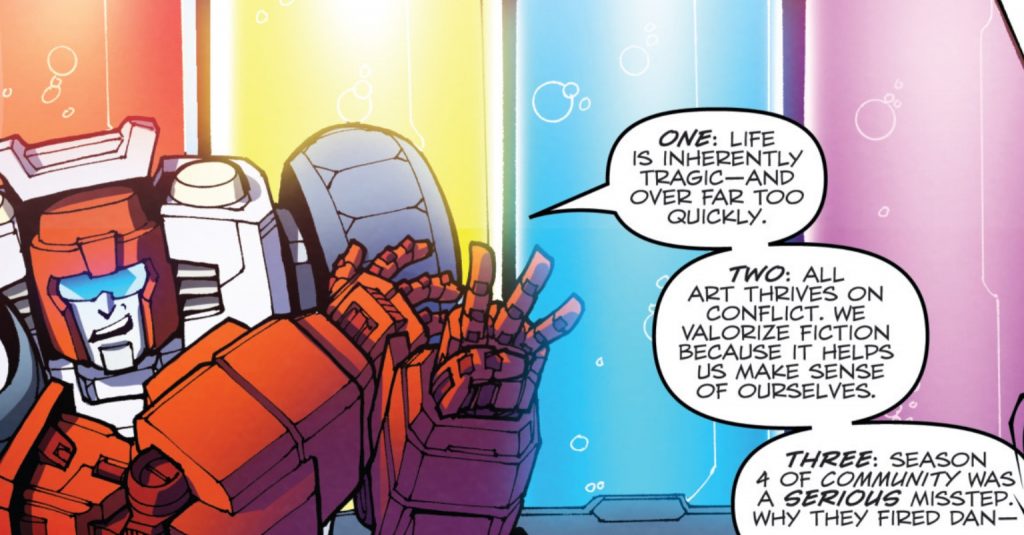
Unicron is the beginning of the end. The Orson Welles-voiced planet eater is going to munch his way across these books and bring them all to an end, and, presumed reboot. And in doing so, he’s demonstrating the thing no one likes to talk about with comics in particular and stories in general. They have to end. Or rather, they should end.
Comics are long-form serials and that shouldn’t work. A serial, especially a pulp one is driven by cliff-hangers and the longer it goes the less powerful those become. The cliffs get shorter, the explosions smaller. Before long you’re going through the motions rather than telling the story and for a lot of comics, for a lot of time, that’s worked.
The harder, better choice, is to bring things to an end. In doing so, you give your characters a chance to resolve, your readers a chance to say goodbye and you leave the stage before someone yells ‘Do FREEBIRD!’. But you also deny people of that shrinking, but still present, joy of continuation. It’s a difficult path to walk, and I commend the IDW staff for making the call. I’ll still miss this guy though:
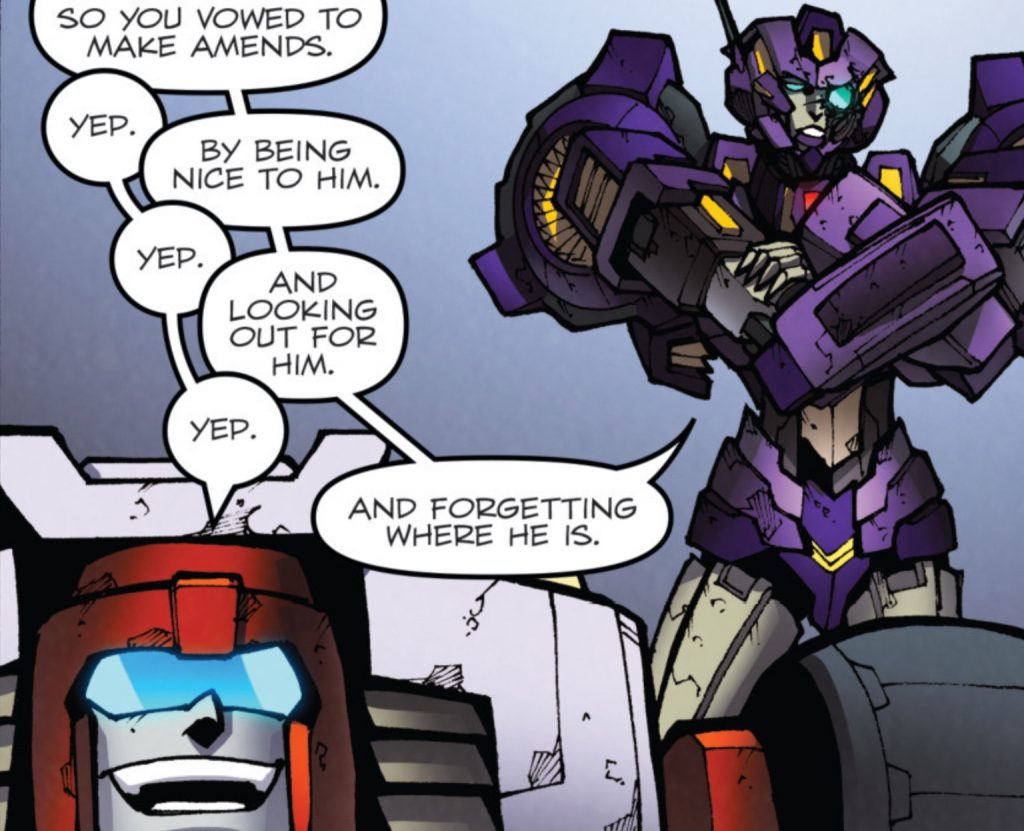
And that brings us to Doctor Who. I’ve written before (I think? If not I should) about how Who’s specific gravity dragging everything in UK pop culture back to it is by no means a good thing at times. This, however, is not one of those times.The Doctor Who FCBD offering contains three (Well…kind of…) stories featuring the Tenth, Seventh and Eleventh Doctors.
‘Catch A Falling Star’ follows Tenth Doctor companion Gabby as she falls through space to what she thinks is her death. Written by Nick Abadzis it’s a neat summation of the Tenth Doctor run featuring Gabby and has stunning artwork from Giorgia Sposito and Arianna Florean. This is truly gorgeous work, using Gabby’s own sketch journals to tell the story and finishing on a beat that’s as surprising as it is welcome. The End, it seems, has been prepared for. And this time at least, is not The End…
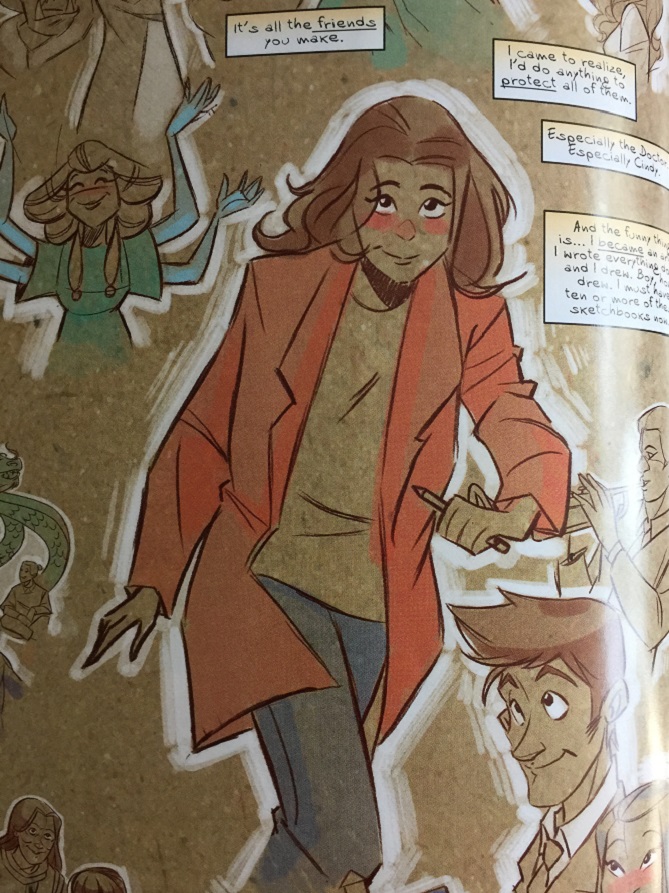
‘The Armageddon Gambit’ by John Freeman, with art by Christopher Jones and colours by Marco Lesko is up next. This is the Seventh Doctor and Ace at their finest, playing chess on levels their opponents don’t see coming. It’s breezy and fun and Jones’ artwork does that near impossible thing of capturing likenesses without losing fluidity of expression, Plus, again, there’s a subtle note of hacking the game so you can win here. It’s a Seventh Doctor story certainly but one with a far more grandiose (And REALLY COOL) Console room than the BBC budget ever allowed.
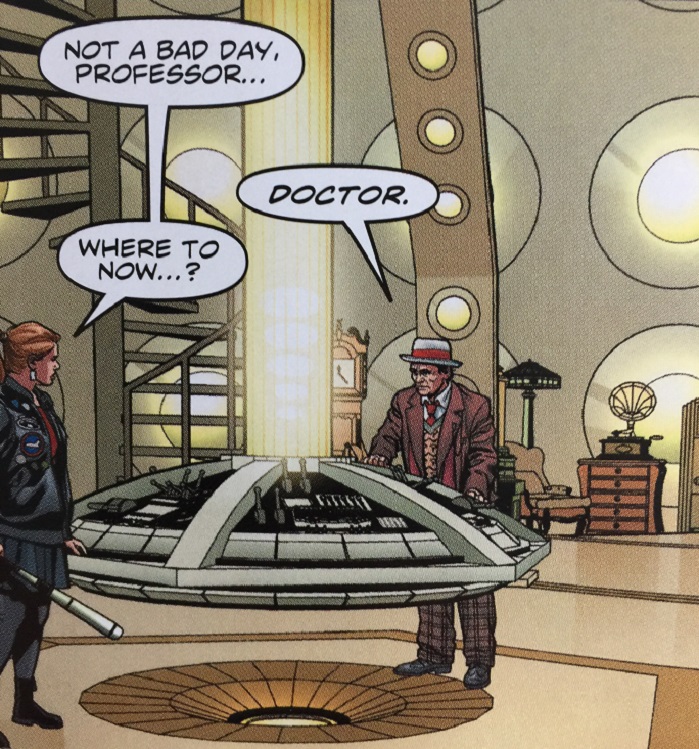
‘Midnight Feast’ is up next, by George Mann with art by Mariano Laclaustra and colours by Carls Cabrera. This is an odd one for me as Eleven is one of the Doctors I have the least time for. However, the story does a great job of emphasizing the best elements of that run’s style. Peckish but not sure for what, Eleven pops the TARDIS off to one of his favorite diners, resolves a dispute or two, fails to find anything he likes and is then introduced to the joys of the tuna sandwich by his companion, Alice. It’s short, breezy, fun and again, ends in a way you wouldn’t expect.
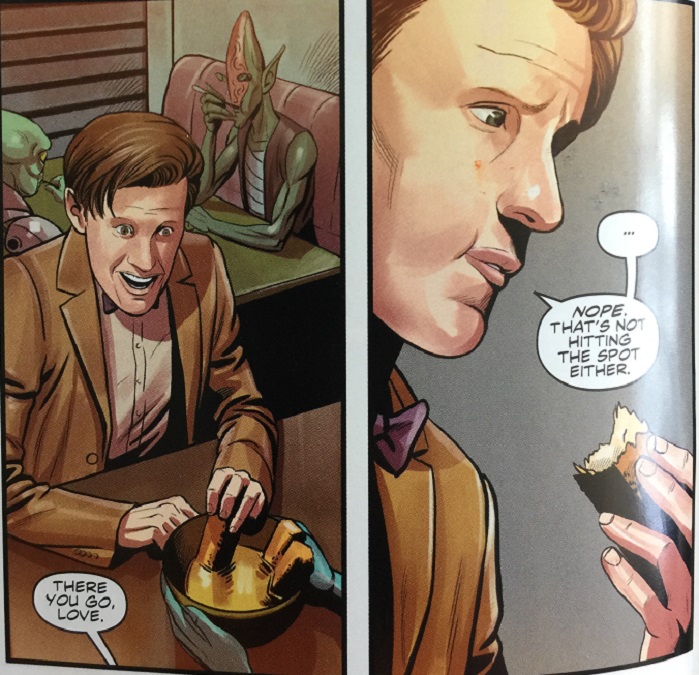 And then this happens.
And then this happens. No warning. No dialogue. Just, BOOM. The 13th Doctor, running headlong into the world with a massive smile on her face and trouble undoubtedly mere pages away. Jody Houser’s script, Rachael Stott’s art, Richard Starkings and Comicraft’s Jimmy Betancourt’s letters, it all works perfectly and works instantly. In doing so, it ties everything I’ve been talking about together.
No warning. No dialogue. Just, BOOM. The 13th Doctor, running headlong into the world with a massive smile on her face and trouble undoubtedly mere pages away. Jody Houser’s script, Rachael Stott’s art, Richard Starkings and Comicraft’s Jimmy Betancourt’s letters, it all works perfectly and works instantly. In doing so, it ties everything I’ve been talking about together.
Stories can, and should, end. Otherwise they aren’t stories they’re just doing laps with words. Empty exercises in style and nostalgia that ring hollow even as the few voices still singing along get louder.
But there’s always another way, and it’s one that these books, especially the Doctor Who one, embody;
Change.
The same notes played on a new instrument. New voices. New perspectives. Ones that honor what they’re built on but aren’t beholden to them. Stories that do not gate keep themselves and whose fans shouldn’t either. Because every new voice, every new perspective and new start shows us all something different about the stories we love. And if that isn’t amazing, I don’t know what is.
Happy Free Comic Book Day everyone. Go take your local store donuts and buy something. I’ll see you next month.
(And if you have trouble finding your local comic store, try here. Or, talk to these folks. I used to work for them and they’re good people.)
